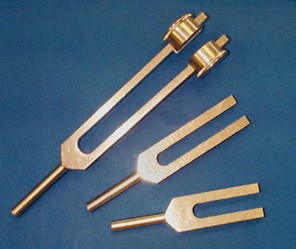
The study could not reveal significant differences in the effect of self-reported noise exposure on adult hearing thresholds between the groups with OM and the group with normal childhood hearing. Eardrum pathology added a marginally increased risk of adult hearing loss (1-3 dB) in children with otitis media with effusion or hearing loss after rAOM. The effects of CSOM and hearing loss after rAOM on adult hearing thresholds were larger in participants tested in middle adulthood (ages 40 to 56 years) than in those tested in young adulthood (ages 20 to 40 years). Children diagnosed with hearing loss after rAOM had somewhat improved hearing thresholds as adults. The effects were adjusted for age, sex, and noise exposure. Three thousand sixty-six children were diagnosed with hearing loss the remaining sample had normal childhood hearing.Ĭompared with participants with normal childhood hearing, those diagnosed with childhood hearing loss caused by otitis media with effusion (n = 1255), chronic suppurative otitis media (CSOM n = 108), or hearing loss after recurrent acute otitis media (rAOM n = 613) had significantly reduced adult hearing thresholds in the whole frequency range (2 dB/17-20 dB/7-10 dB, respectively). Population-based cohort study of 32,786 participants who had their hearing tested by pure-tone audiometry in primary school and again at ages ranging from 20 to 56 years.

Furthermore, to study whether the effects of OM on adult hearing thresholds are moderated by age or noise exposure. To study the extent to which otitis media (OM) in childhood is associated with adult hearing thresholds. Clinicians should remain mindful of these differences and optimize these techniques in specific clinical applications to improve TFT accuracy. Variability exists in the reported test accuracy measurements of TFTs for clinical screening, surgical candidacy assessments, and estimation of hearing loss severity. There is high risk of bias in patient selection for a majority of the studies. Significant heterogeneity in TFT methods and audiometric thresholds to define hearing loss precluded meta-analysis. The audiometric thresholds at which tests transition from normal to abnormal ranged from 13 to 40 dB of conductive hearing loss for the Rinne test and from 2.5 to 4 dB of asymmetry for the Weber test. The sensitivity and specificity of the Rinne test for detecting conductive hearing loss ranged from 43% to 91% and 50% to 100%, respectively, for a 256-Hz fork and from 16% to 87% and 55% to 100% for a 512-Hz fork. Seventeen studies with 3158 participants, including adults and children, met inclusion criteria. Two independent evaluators corroborated the extracted data and assessed risk of bias.
#TUNING FORK HEARING TEST MANUAL#
PubMed, Ovid Medline, EMBASE, Web of Science, Cochrane, and Scopus and manual bibliographic searches.Ī systematic review of studies reporting TFT accuracy was performed according to a standardized protocol. (2) To identify the audiometric threshold at which TFTs transition from normal to abnormal, thus indicating the presence of hearing loss. (1) To determine the diagnostic accuracy of tuning fork tests (TFTs Weber and Rinne) for assessment of hearing loss as compared with standard audiometry. 83 patients were negative to 256 Hz tuning fork but positive to 5 Hz tuning forks had the air-bone gap range of 20 to 29 dB with a mean air-bone gap of 25.46 dB.Ĭ onclusions: We conclude that Rinne’s tuning fork test can be used to quantify the degree of conductive hearing loss into mild (20-30 dB), moderate (30-45 dB), and severe (45-60 dB).

M ethods: A retrospective study with a sample size of 300 was undertaken over 12 months from April 2018 to March 2019 at the out-patient department of ENT of VMKV medical college and hospital, Salem. Aim of our study an attempt is made to find the utility of three different tuning forks (256,512,1024 Hz) for quantification of conductive hearing loss and their accuracy. Rinne tuning fork tests can be used to diagnose conductive hearing loss.

Ideally, 3 tuning forks are used 256, 5 Hz. It is used to assess the person’s hearing acuity. P> Background: The Rinne tuning fork test is used routinely in clinical ENT examination.


 0 kommentar(er)
0 kommentar(er)
